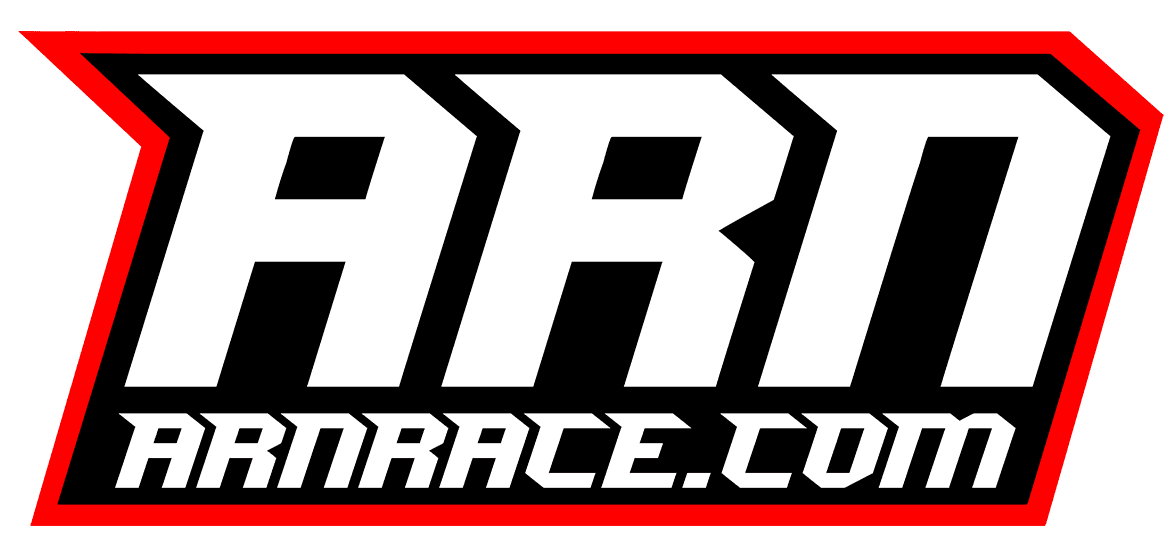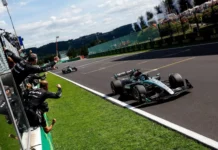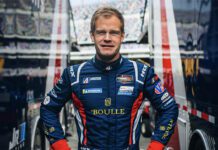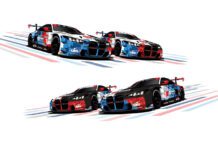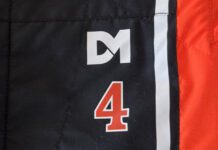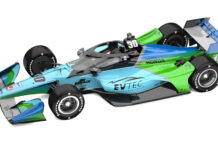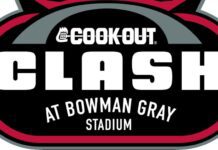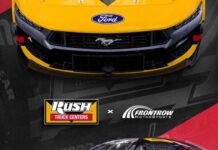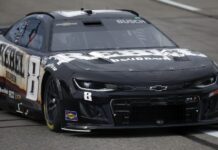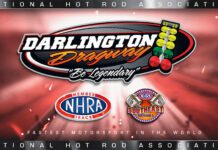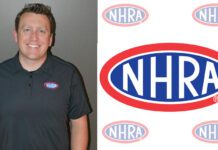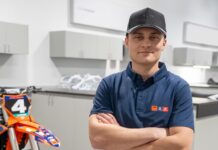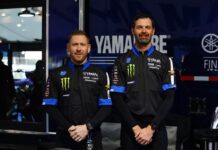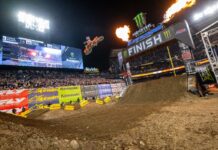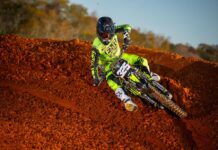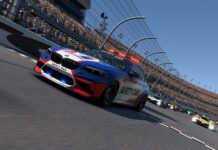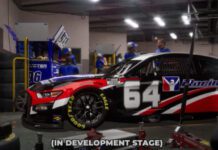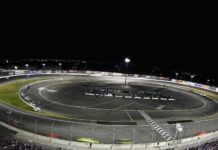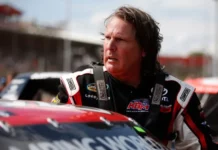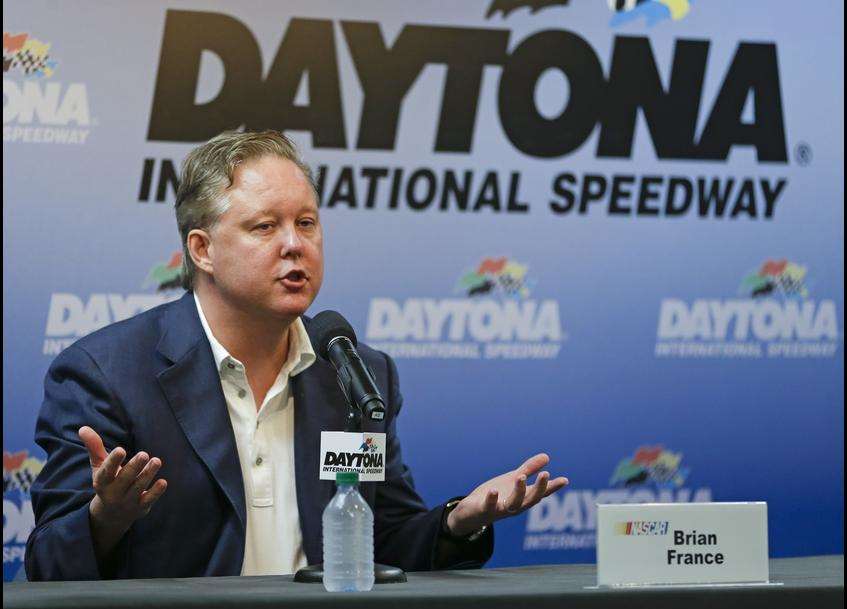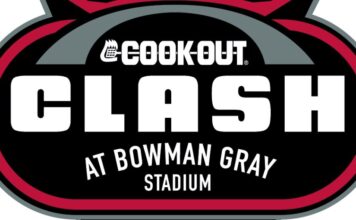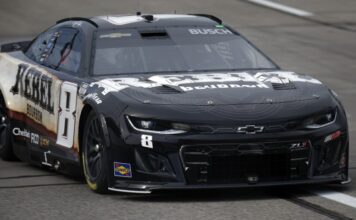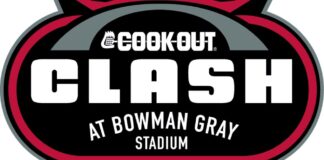Facing renewed demands from drivers to make restrictor-plate racing safer in the wake of Austin Dillon’s frightening crash in Monday morning’s Coke Zero 400 at Daytona International Speedway, NASCAR chairman Brian France says the sanctioning body won’t rest until improvements are made.
After Dillon walked away with just a bruised forearm and tailbone after his car sailed airborne into the catch fence at the start/finish line on the final lap, multiple drivers called on NASCAR to take steps to keep cars from getting up in the air so easily at both Daytona and Talladega, NASCAR’s other restrictor-plate track.
“We live and breathe delivering the closest, tightest and safest competition in the world and when we have a problem, we solve it,” France, NASCAR’s third-generation leader, told SiriusXM NASCAR radio on Monday, just a few hours after Dillon’s harrowing crash.
“Obviously we want to make sure the cars, whenever a car gets airborne, whatever the circumstances, we are all over that to understand what happened. We’ll look at all the things that are available to us,” France added. “That is one of the beauties of technology and innovation and one of the benefits that we have as the only sanctioning body that has a full-time research and development center that focuses only on that. On safety, on getting the rules packages right, etc. We’re the only one that deploys that many resources and that much talent.”
France told Sirius XM that reviews of Dillon’s incident, which resulted in five fans in the stands being treated for minor injuries, began early Monday morning at NASCAR’s Research and Development Center in Concord, North Carolina.
“We’re sorting out what some of the best options we have in front of us with technology and innovation to make things better,” France said. “And the work has already begun on that. That’s job one at NASCAR — safe, tight, good competition.
“We’re already on it.”
Multiple drivers, most notably Ryan Newman and Joey Logano, expressed frustration after the Coke Zero 400 about what they deemed to be a failure by NASCAR in recent years to make the racing at the two plate tracks safer.
“NASCAR got what they wanted,” Newman, the 2008 Daytona 500 champion, told USA Today Sports after Monday morning’s Daytona finish. “They just don’t pay attention to safety. Simple as that.”
Logano, this year’s Daytona 500 champion, was also critical.
“There isn’t much good to say about what happened here tonight,” he said. “It is a product of the racing here. I just heard the 3 (Dillon) was up in the catch fence and motors were flying out of cars. That isn’t the first time that has happened here, and it is just dumb that we allow it to happen more than once.”
Since Dale Earnhardt’s death in a crash on the final lap of the 2001 Daytona 500, NASCAR and tracks have instituted numerous changes aimed at making drivers — and the sport, in general — safer. Among the most notable safety interventions have been the addition of SAFER barriers at all tracks and NASCAR’s requirement after Earnhardt’s death that all drivers in its three national series wear mandatory head-and-neck restraint (HANS) devices, and closed-face helmets.
Restrictor-plate racing has remained at the forefront of the safety debate, however, with multiple instances of drivers going airborne in recent years. Three times since 2009, a car has flown into a catch fence at Daytona or Talladega, but the drivers have escaped with minor or no injuries.
Speaking Tuesday on a NASCAR teleconference, Dillon echoed the sentiment that change is needed at the plate tracks.
“We can do some things to prevent these accidents, for sure,” said the oldest grandson of veteran team owner Richard Childress. “I think we need to and we can. They’ve taken the (Daytona) car to NASCAR, and they’ll look at the car and figure out ways to keep them on the ground. We’re trying to keep them from getting in the air, and we’ll do what we can. The way the racing is set up now, it breeds these kind of wrecks.”
France isn’t surprised that the Dillon wreck has drivers lobbying for more in the way of safety.
“I think emotionally, and at the end of a long day, drivers are going to make some comments whatever they may be,” France said. “Obviously, what we do want is the closest, tightest racing that we can but we put safety at the top of the list for obvious reasons. We pursue those things as we go along and have a track record of getting those things right although it’s a moving target and it’s never simple.
“An accident like (Dillon’s), boy, it takes your breath away and it should. But that’s auto racing. We’re working on solutions all the time to make racing safer and better.”
